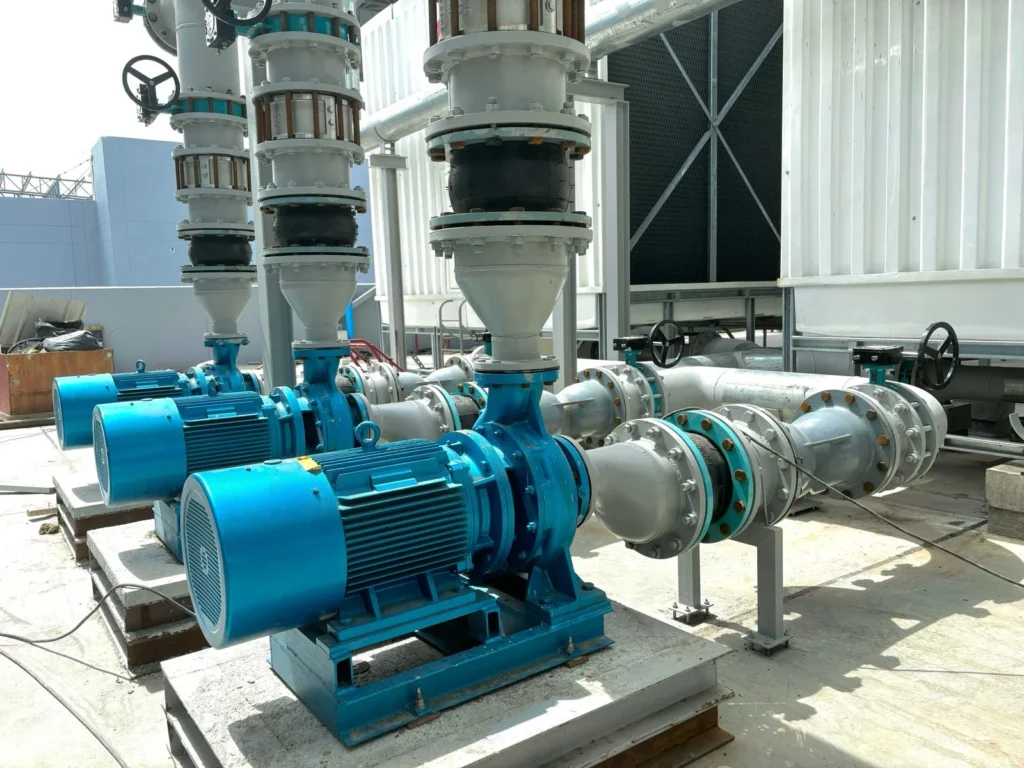Your pump might still be running, but that doesn’t mean it’s doing its job well. Hidden inefficiencies, seal breakdowns, and material incompatibilities slowly chip away at plant output and safety. Maintenance teams keep patching the same issues, and procurement keeps ordering the same model.
But here’s the thing, non metallic pumps and newer industrial-grade models are no longer luxury upgrades. They’re your line of defense against rising fluid aggressiveness, higher temperature duty, and stricter EHS audits. If you’re exploring durable non metallic pumps built for long-term performance, read here.
Let’s break down the five signs that it’s time to stop repairing and start replacing.
1. Recurrent Seal Failures and Unplanned Downtime
Every time a mechanical seal fails, the pump has to be pulled offline. That’s production loss, potential fluid spillage, and a rising cost-per-hour of operations.
- Are seals wearing out within months of replacement?
- Do you see leakage despite compliant installation and torqueing?
- Does the pump need full disassembly to replace seals?
These are not minor red flags; they’re indicators that your pump design or material choice is outdated. Newer non-metallic pumps come with:
- Dry-run protection to prevent frictional seal damage
- Modular seal chambers (single, double, cartridge)
- Seal-less options like mag-drive for zero emission
What’s Causing It?
- Higher fluid temperatures beyond the original spec
- Slurry or crystalline deposits are damaging lapped seal faces
- Worn-out shaft sleeves allow radial play
2. Material Degradation in the Wet End
Your pump might look fine on the outside. But inside, it could be corroding, pitting, or losing mass.
Here’s how you spot it:
- Flow rate dips without a change in system head
- Unexpected metal flakes in pumped fluid
- Thinning or softening of the casing over time
This kind of damage compromises not just pump performance but fluid purity too. It’s especially dangerous when transferring acids, oxidizers, or high-pH slurries.
Modern non-metallic pumps use acid-safe polymers like:
- PVDF (polyvinylidene fluoride) for strong acids like H2SO4
- ETFE or FEP lining for aggressive oxidizers like HNO3
- Polypropylene for alkaline cleaning solutions
What’s Causing It?
- Using SS304 or CI pumps for acidic or chlorinated media
- Ignoring oxidizer compatibility (e.g., bleach on metal impellers)
- High-velocity erosion combined with chemical corrosion
3. Rising Energy Bills for the Same Output
If your pump is drawing 7.5 kW now to deliver the same head and flow that used to take 5.5 kW, something’s wrong.
Efficiency losses creep in due to:
- Worn impeller vanes
- Incorrect trimming
- Seal friction
- Misaligned shafts
- Increased internal clearances
Today’s pump upgrades come with:
- Hydraulic rebalancing for less power draw
- High-efficiency impeller profiles (semi-open, vortex)
- Low-NPSH designs to reduce suction energy demand
If power costs are spiking without a corresponding rise in throughput, it’s not your utility tariff. It’s your pump.
What’s Causing It?
- Operating too far from the BEP (best efficiency point)
- Deposits on the impeller or volute narrowing passages
- Cavitation from vapor lock or poor inlet geometry
4. You’re Still Using Legacy Pump Designs
Cast iron frame? No back pull-out? Bearings replaced every 6 months? That’s not “reliable.” That’s a slow-moving failure.
Legacy pumps are prone to:
- Inflexible seal choices
- No corrosion resistance
- Poor part availability
- Longer service downtime
Modern industrial-grade centrifugal pumps bring in:
- Back pull-out design (no pipe disassembly for seal replacement)
- Interchangeable wet ends for various fluids
- Faster seal replacement options (less than 30 min)
If your system downtime is longer than the cleaning time, you’re losing revenue.
What’s Causing It?
- Obsolete make/model with no current spares
- Casing or bracket distortion due to thermal expansion
- Inability to handle new process fluids
5. Changing Process Requirements
Your original pump may have been sized for 50°C alkaline fluid. Now you’re transferring 90°C acid, 24×7.
Mismatch between pump spec and fluid changes leads to:
- Premature seal and bearing failures
- Material breakdown
- NPSH issues due to fluid vapor pressure
Upgrading lets you realign with new specs:
- New flow/head ranges for upgraded plant
- Chemical compatibility for newer formulations
- Temperature resistance up to 350°C
What’s Causing It?
- Increased process load or batch frequency
- The formula changes with higher reactivity
- Addition of solids or abrasives to the original fluid
How to Make the Switch Without Halting Production
When upgrading, you don’t need to stop your line completely. Use the checklist below:
| Factor | What to Do |
| Current System | Audit all duty points |
| Fluid Properties | Run a chemical compatibility test |
| Seal Requirements | Choose from single/double/mag-drive |
| Material | Pick between non-metallic vs metal |
| Timeline | Opt for modular pump replacements |
Get the new pump for parallel installation. Gradually shift the load. Monitor performance. Then decommission the old one.
Final Word: Stop Repairing. Start Replacing.
Non-metallic pumps and modular designs are not a niche upgrade. They are the new standard for fluid safety, energy efficiency, and maintenance speed.
If your pump is costing more to maintain than to replace, that’s your sign.
Chemitek’s process pumps are engineered for zero compromise, designed to survive, not just circulate.



